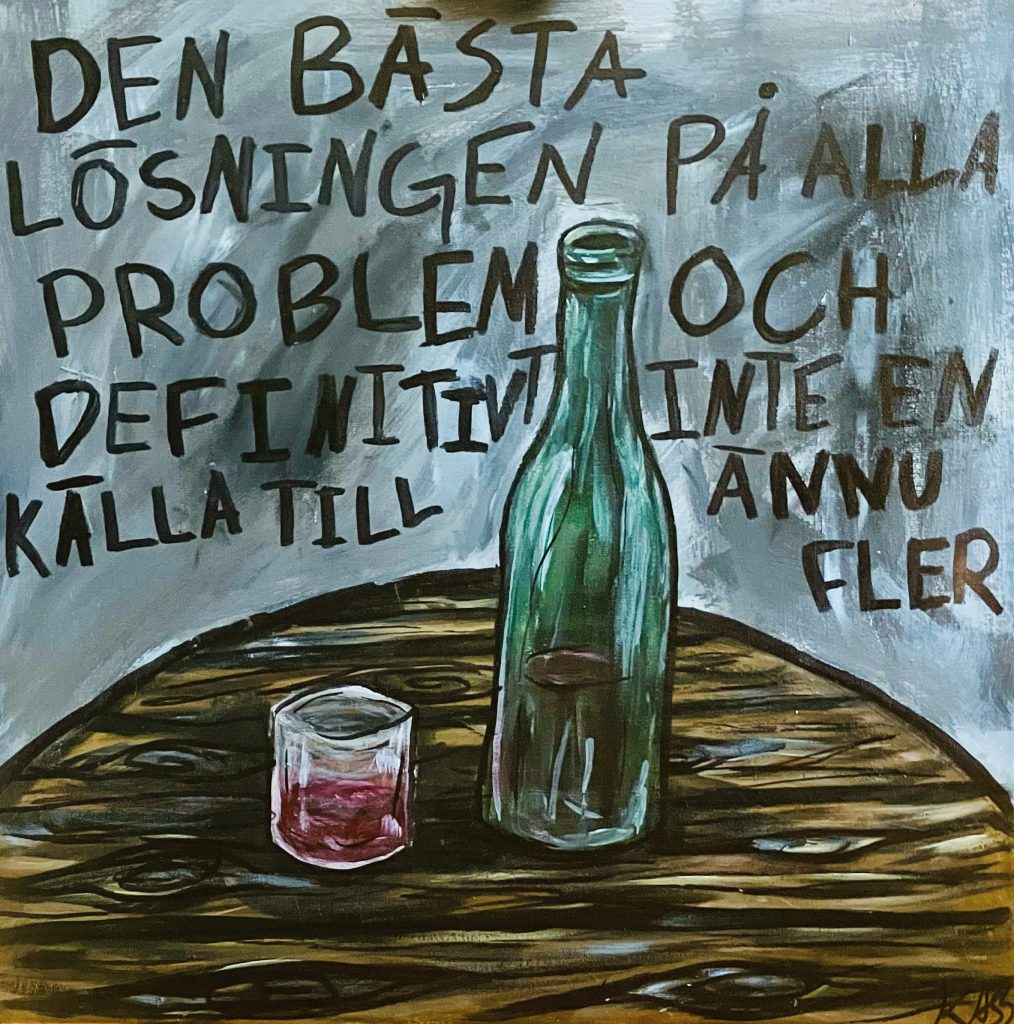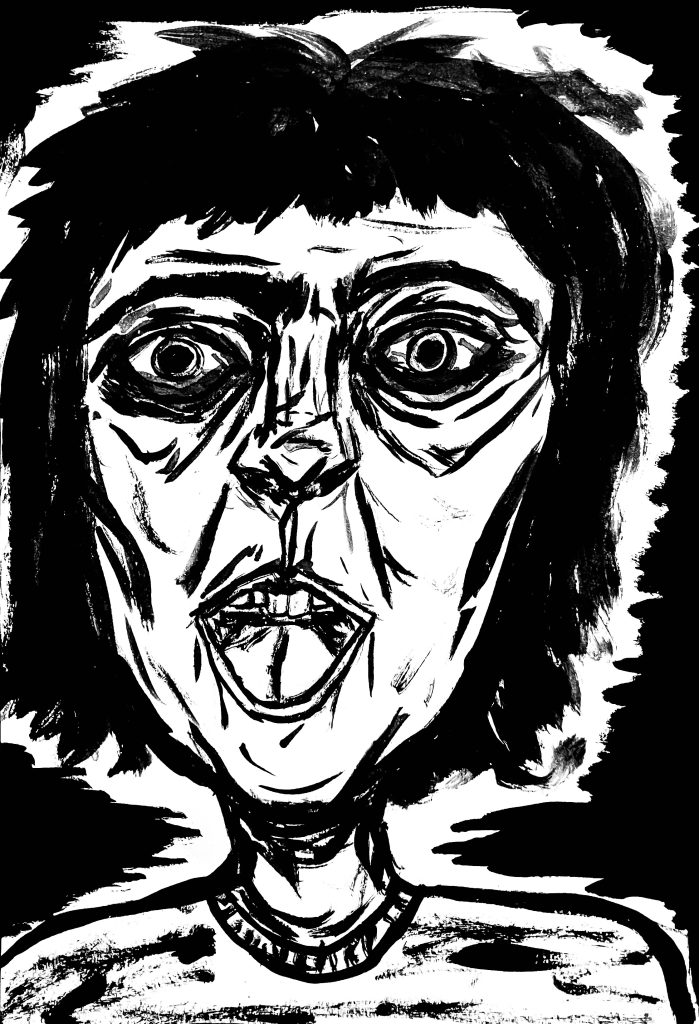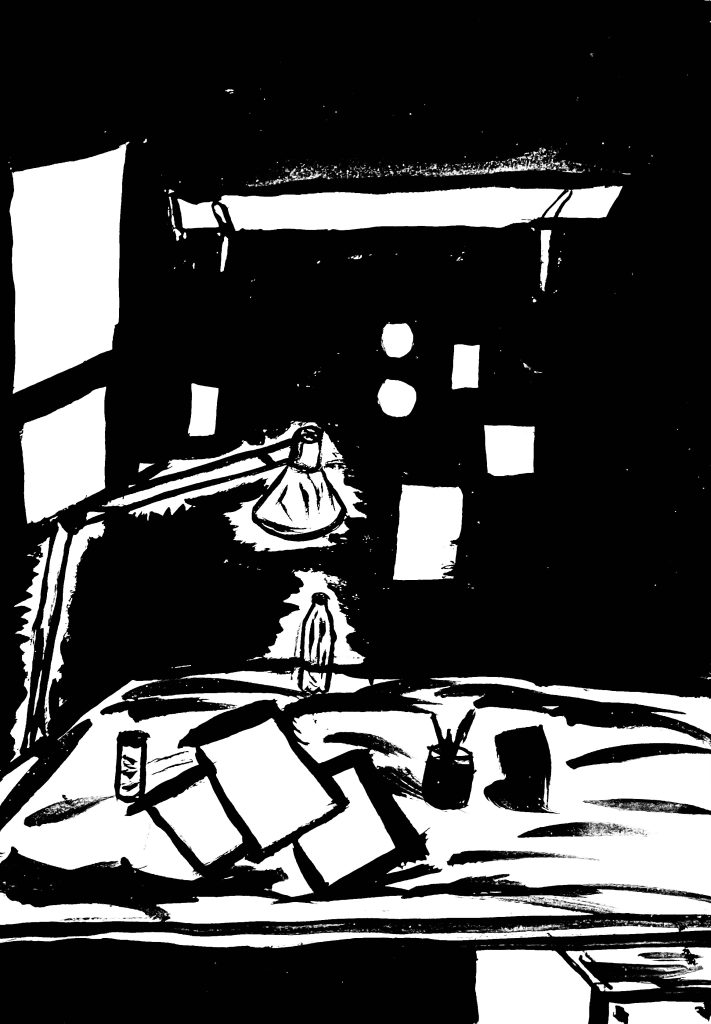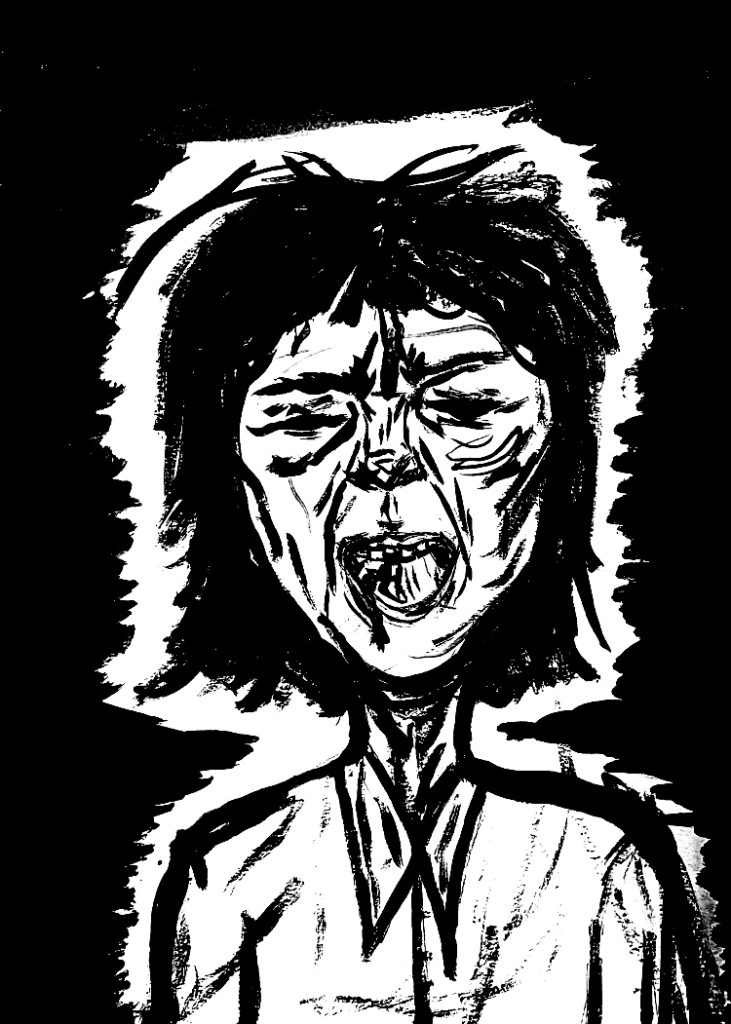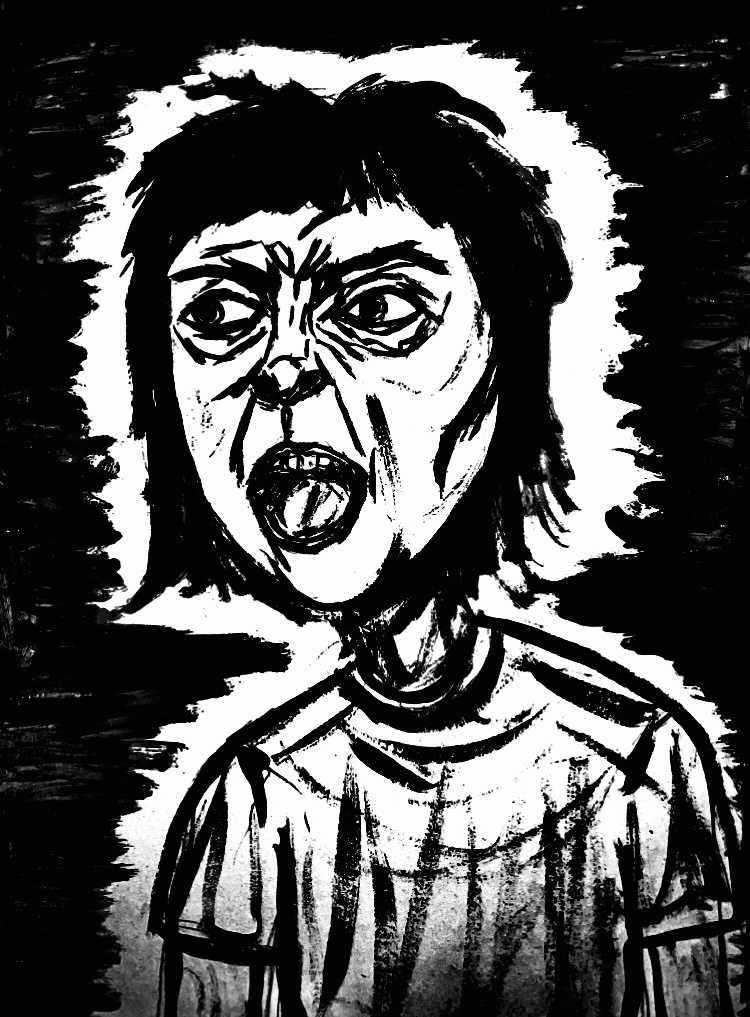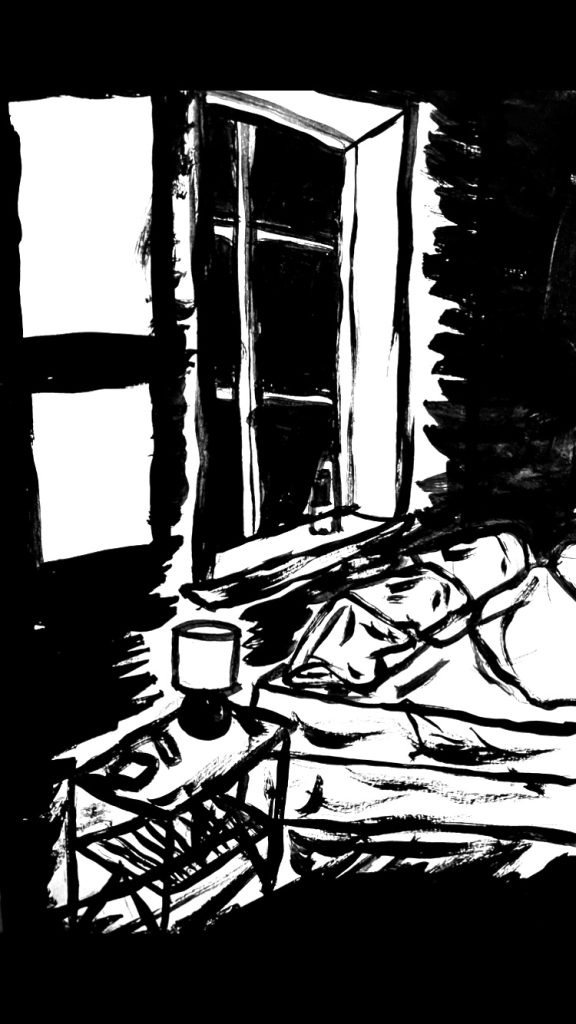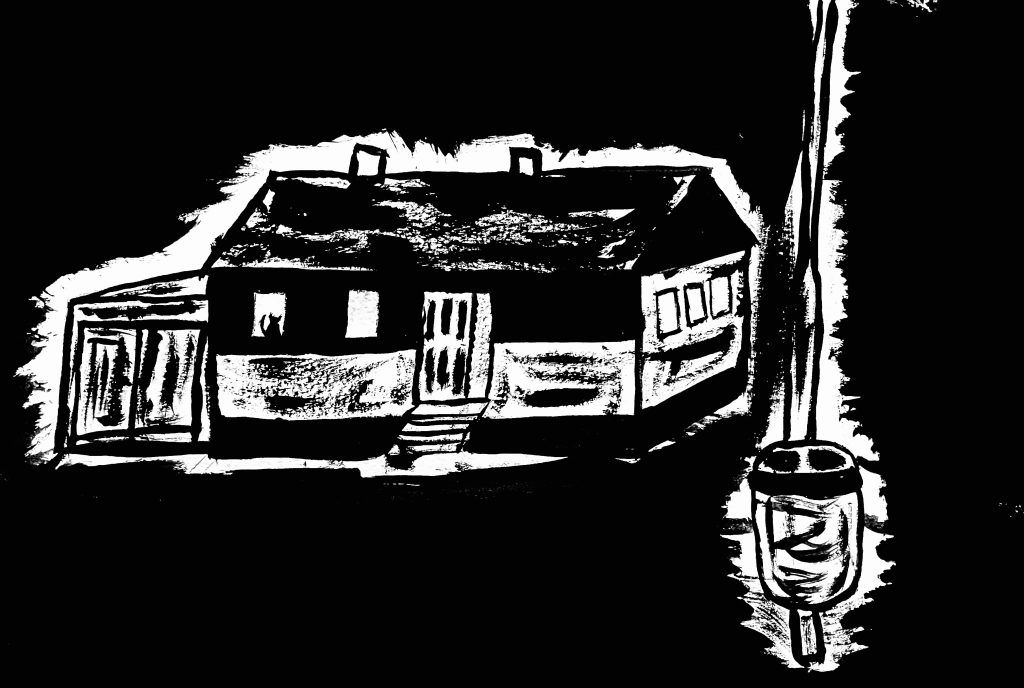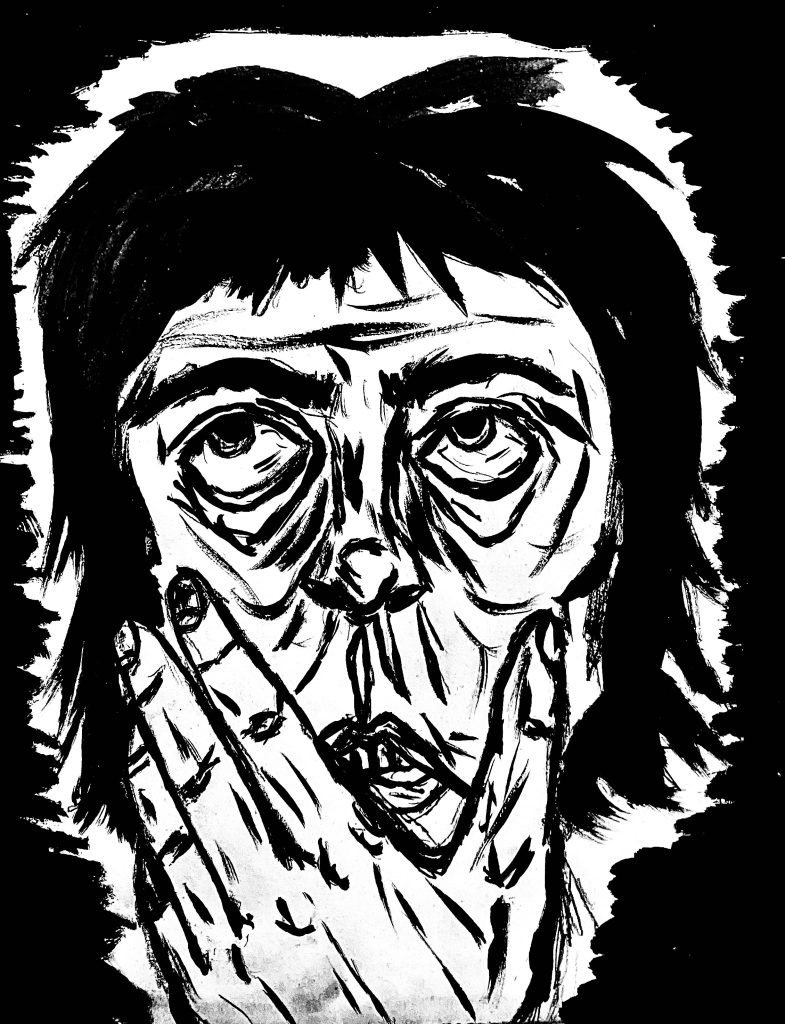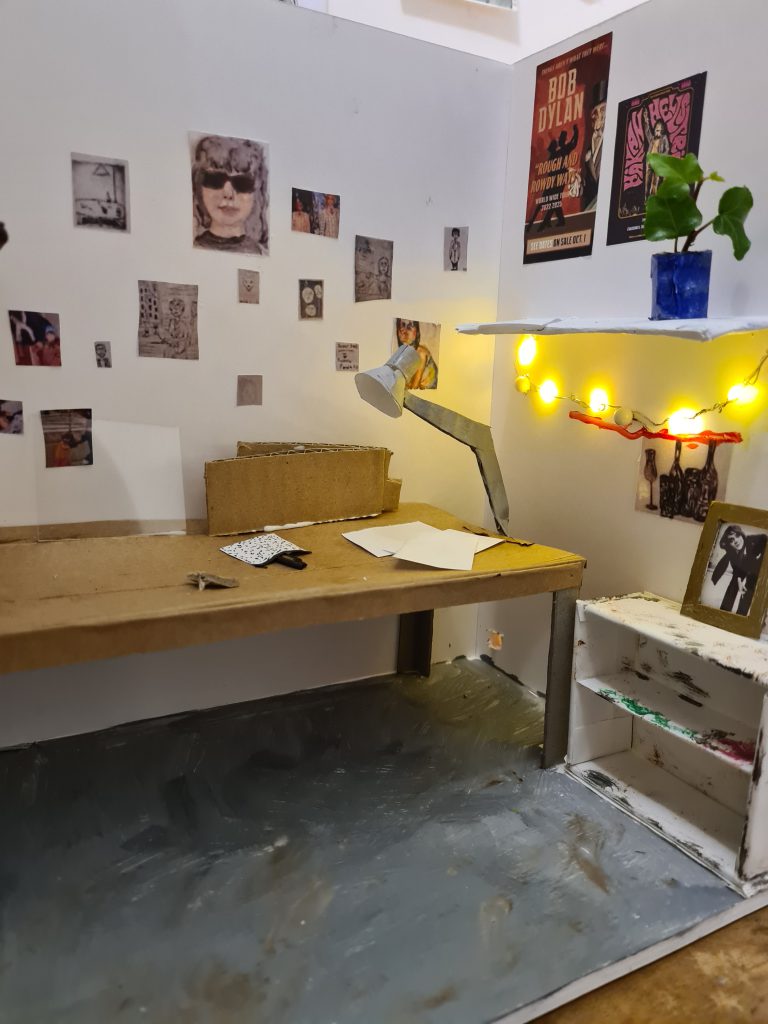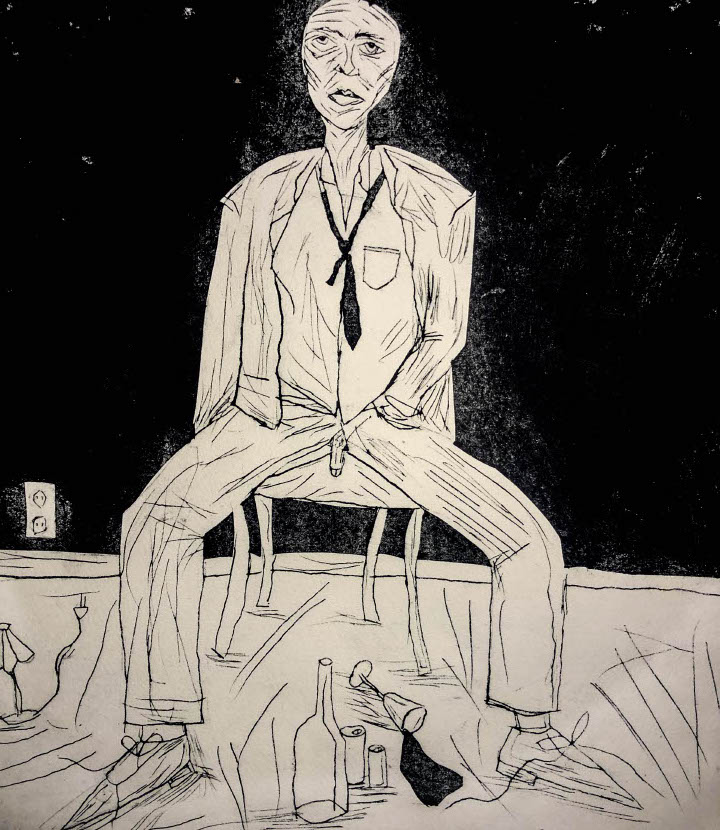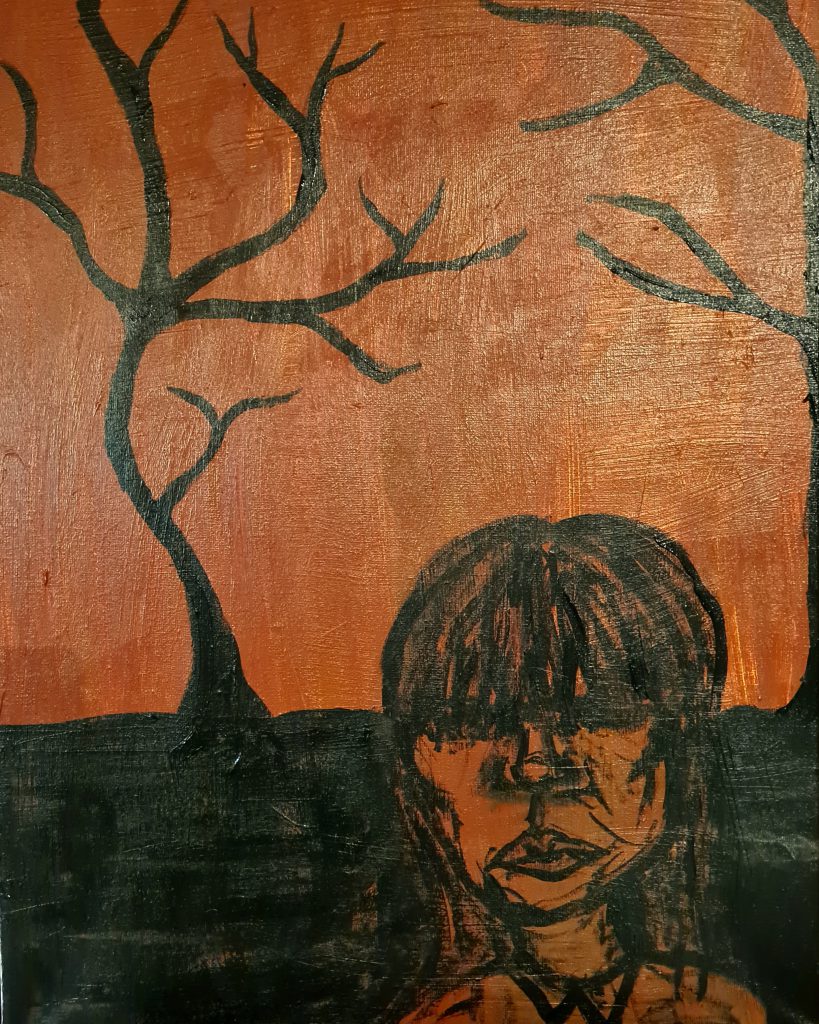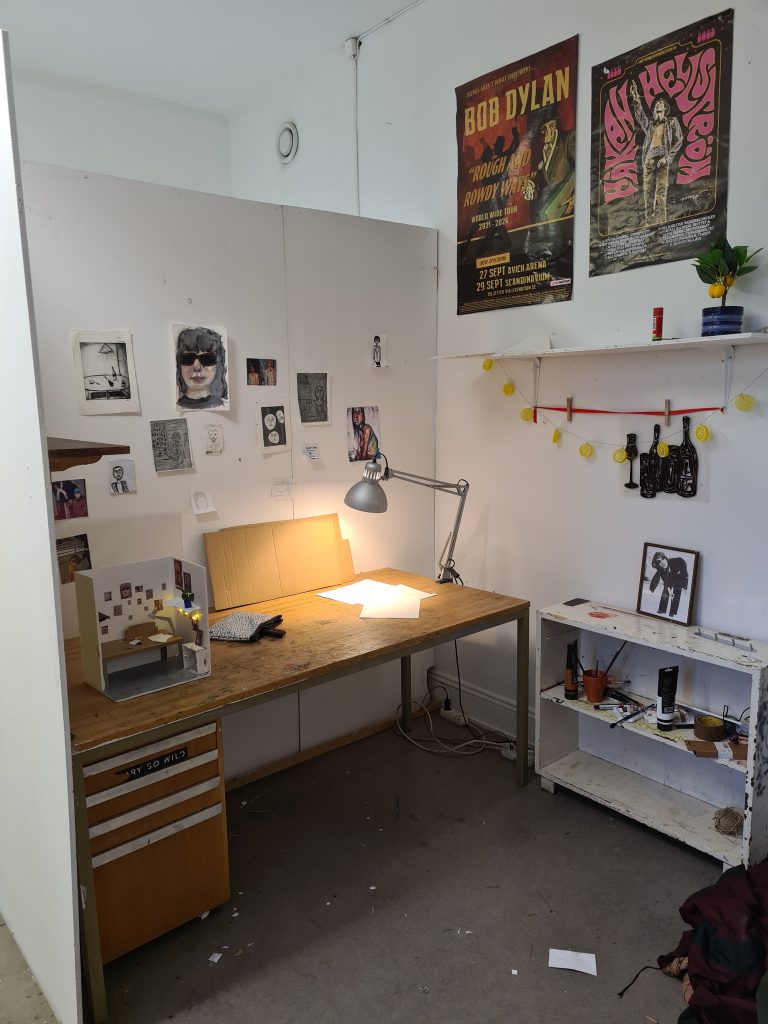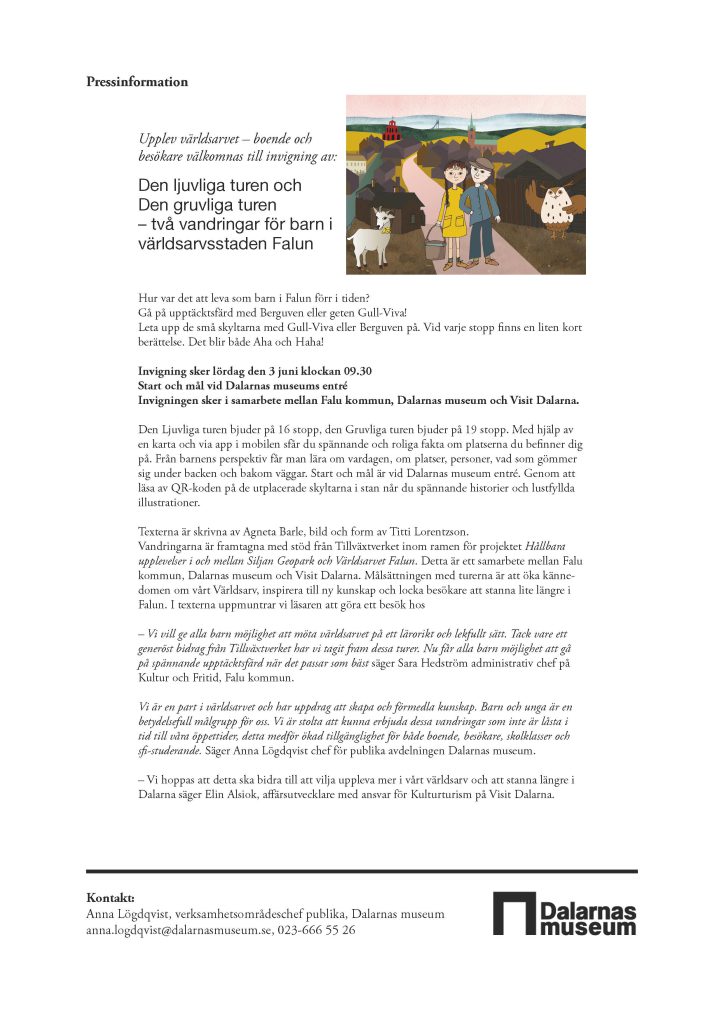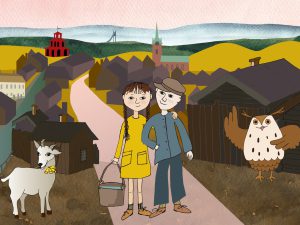Här lägger vi ut pressinformation om vad som är pågång på Dalarnas museum.
Press från år 2021 finns här.
Press från år 2022 finns här
Arkeologerna Greger Bennström och Jenny Karlsson förklarar när man ska kontakta en arkeolog, och visar runt i Dalarnas museums arkiv vid Tallen i Falun där många kultur- och fornfynd bevaras.
Hör arkeologen om hur synen på Dalarna förändrats efter fyndet av några av Skandinaviens nordligaste lämningar av människor, som levde i området för 9000 år sedan.
Ragnar och Birgit Åhléns stiftelse för konst i Dalarna utdelar årets stipendium på 25000 kronor till Alice Sunna, som går andra året vid Göteborgs konstskola. Stipendiet ges till ”unga blivande konstnärer för deras utbildning” och bland över 40 sökande valde en enhällig styrelse Alice Sunna från Sifferbo, Gagnef, till årets stipendiat.
Motiveringen lyder:
”Med ett djärvt, experimentellt formspråk i svart och vitt vidareutvecklar Alice Sunna traditionen från Falugrafikerna på ett egenartat och personligt sätt.”
I ansökan skriver Alice Sunna:
”Jag håller främst på med grafik och akrylmålningar men håller på att utforska andra tekniker. Skulle jag beskriva min konst, skulle jag säga svart, tråkigt, förfallet och vardag. Jag gillar det tråkiga och det förfallna, har alltid gjort det. Nu börjar jag dock utvecklas till något annat. Jag har börjat ta mina egna perspektiv och mig själv in i konsten, vilket har varit väldigt intressant.”
- Det är just den här utvecklingen som är så värdefull – att inte stå still, säger Nicke Welin-Berger, styrelseledamot av Ragnar och Birgit Åhléns stiftelse för konst i Dalarna, och talar för hela styrelsen. Alice Sunna är inte bara under utbildning utan även under utveckling och prövar nya vägar.
Ragnar Åhlén var son till J.P. Åhlén, som med sin farbror grundade postorderfirman Åhlén & Holm 1899 i Insjön, Åls socken. Så småningom växte rörelsen till de landsomfattande varuhuskedjorna Åhléns och Tempo. År 1956 grundade Ragnar och hans hustru Birgit Åhlén en stiftelse för att främja konst i Dalarna. Samtidigt donerade de ”en samling konstverk med motiv från Dalarna, skapade av konstnärer med ursprung från Dalarna eller verksamma där under viss tid.” Avkastningen från Ragnar och Birgit Åhléns stiftelse för konst används till stipendier, vetenskaplig forskning och inköp av konst som förvaltas av Dalarnas museum.
-Förutom det intressanta uppdraget att förvalta stiftelsens konst, tycker vi att det både är roligt och viktigt att vara med att årligen utse en stipendiat. Det finns många talangfulla, blivande konstnärer som har behov av ekonomiskt och moraliskt stöd och uppmärksamhet. Detta stipendium bidrar i alla fall till en del att möta sådana behov, säger Christer Björklund, museichef vid Dalarnas museum
Kontaktuppgifter:
Stipendiat: Alice Sunna 076-113 68 33, alice.sunna@mail.com
Ragnar och Birgit Åhléns stiftelse för konst i Dalarna, ordförande: Malin Lagergren, 070-312 41 06, malinlagergren@yahoo.se
KLÄDD I DALARNA – Dalfolkets kläder till vardag och fest
DALARNAS SOCKENDRÄKTER innehåller en mångfald av färger, mönster och tekniker som gjort dem både kända och beundrade långt utanför landskapets gränser.
Med utställningen ”Klädd i Dalarna” vill vi berätta om landskapets rika dräkttraditioner genom historien. Hur sockendräkterna utvecklats och varierat, samhällets förändringar och ekonomins inverkan på lust och förmåga att anpassa sig till nya moden och importerade material. Utställningen belyser modets påverkan, när olika tekniker och tyger införlivats i dräkterna liksom betydelsen av internationella kontakter vad gäller specialiserade hantverkare och handelsmän.
Med utgångspunkt i 1700-talets folkliga mode möter besökaren de traditionella dräkternas utveckling under två seker. Utställningen belyser också de komponerade dräkternas tillkomst och utveckling under 1900-talet.
Under året har det pågått ett intensivt arbete med att riva–bygga–konstruera i Dalarnas museums dräktutställning, samtidigt som dockor klätts och smyckats. Den tidigare utställningen har utökats med ett nytt rum som gjort plats för fler plagg och dräkter ur vår samling.
Till utställningen har det producerats en katalog som visar hela dräkter och dräktdelar från olika tider ur museet samlingar.
Vi hoppas att den färgsprakande utställningen ska ge inspiration till användning av dräkter och eget slöjdande idag.
Vernissage lördagen den 17 juni kl 14.00.
Kontakt: Anna-Karin Jobs Arnberg, 072-1454501, anna-karin.jobs.arnberg@dalarnasmuseum.se
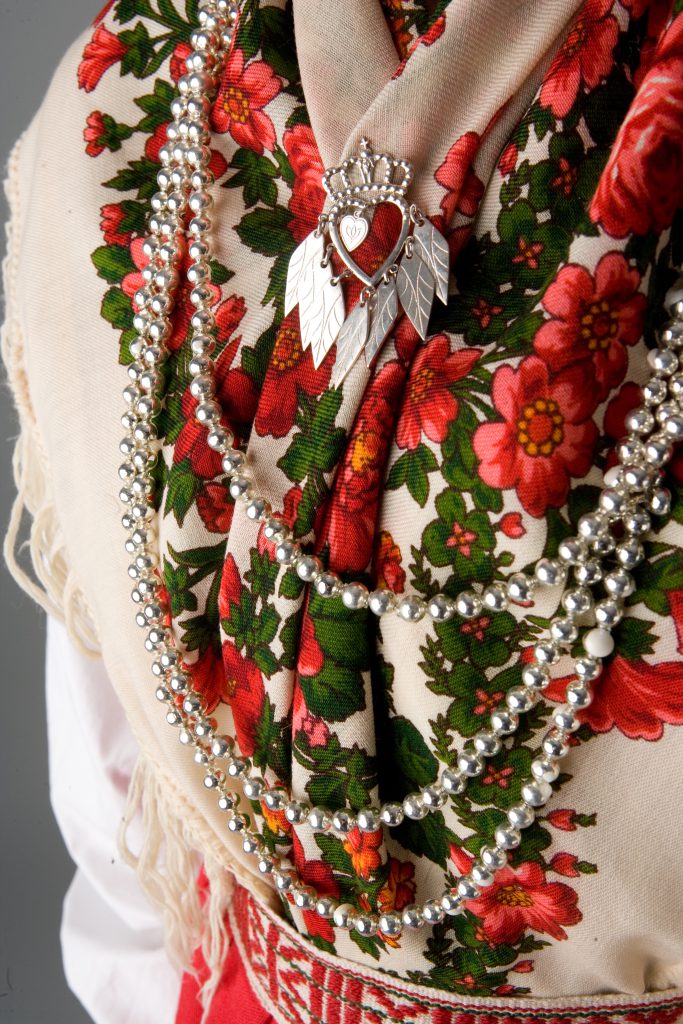

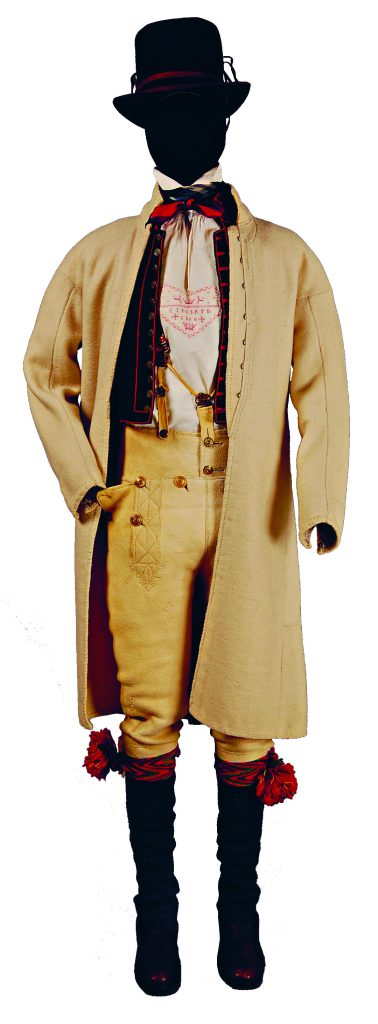
Höstens stora dräktevent
Dalarna Folk Fashion Weekend,
15-17 september 2023
En färgsprakande och exklusiv helg på Dalarnas museum!
Om man älskar dräkter, mode, slöjd och hantverk då får man inte missa höstens stora event: Dalarna Folk Fashion Weekend på Dalarnas museum i Falun. Spelar ingen roll om
man är nörd eller novis – denna helg får du möta likasinnade och frossa i textil.
Dalarna Folk Fashion Weekend är en helg där det bjuds på workshops, visningar, föreläsningar,
debatt, marknad, catwalk, dräktparad, middag med underhållning samt vernissageav Karin Ferners nya utställning.
Det textila hantverket, liksom dräktbruket har gått upp och ner i popularitet under årens lopp, men båda företeelserna har kommit tillbaka stakare än någonsin. Därför har Dalarnas
museum, Dalarnas hemslöjdsförbund, Dalarnas fornminnes-och hembygdsförbund med stöd av Region Dalarna skapat Dalarna Folk fashion Weekend, ett event som ger
kunskap, kompisar och kärlek till dräkt!
Genom att delta i föreläsningar och workshops kommer de som önskar kunna öka sin kunskap i teman som att sy i skinn, lära sig tvåändsstickning och mycket annat. Hör man
till novisernas skara räcker det kanske med att få instruktioner i hur man gör när man sätter på sig en dräkt som har en massa olika delar.
Den ständigt aktuella Karin Ferners utställning EXTRA ALLT och lite till-Lad, slims och kronor i en anda av återbruk kommer att invigas på fredag eftermiddag och är startpunkten
för Dalarna Folk Fashion Weekend. Fredagen följs upp av två dagar fullproppade med dräkt- och textilt hantverk. Bland workshopsdeltagarna märks förutom Anna-Karin Jobs
Arnberg, som också är antikvarie på Dalarnas museum, Lina Odell, Emma Frost, KarinKahnlund, Karin Edlund, Täpp-Lars Arnesson och Maria Neijman. Föreläser gör bland
annat Håkan Liby.
Vill man komma till museet utan att delta i det gedigna programmet kan man besökamarknaden med dräkt och textilrelaterade föremål till försäljning, gå på dräktbytardagen,
titta på Karin Ferners utställning eller lyssna på föredraget/visningen: Klä dig i dräkt.
För mer information:
Marina Andersson, Dalarnas museum,
0703937203, marina.andersson@dalarnasmuseum.se
Anna-Karin Jobs Arnberg, Dalarnas museum,
072-1454501 anna-karin.jobs.arnberg@dalarnasmuseum.se

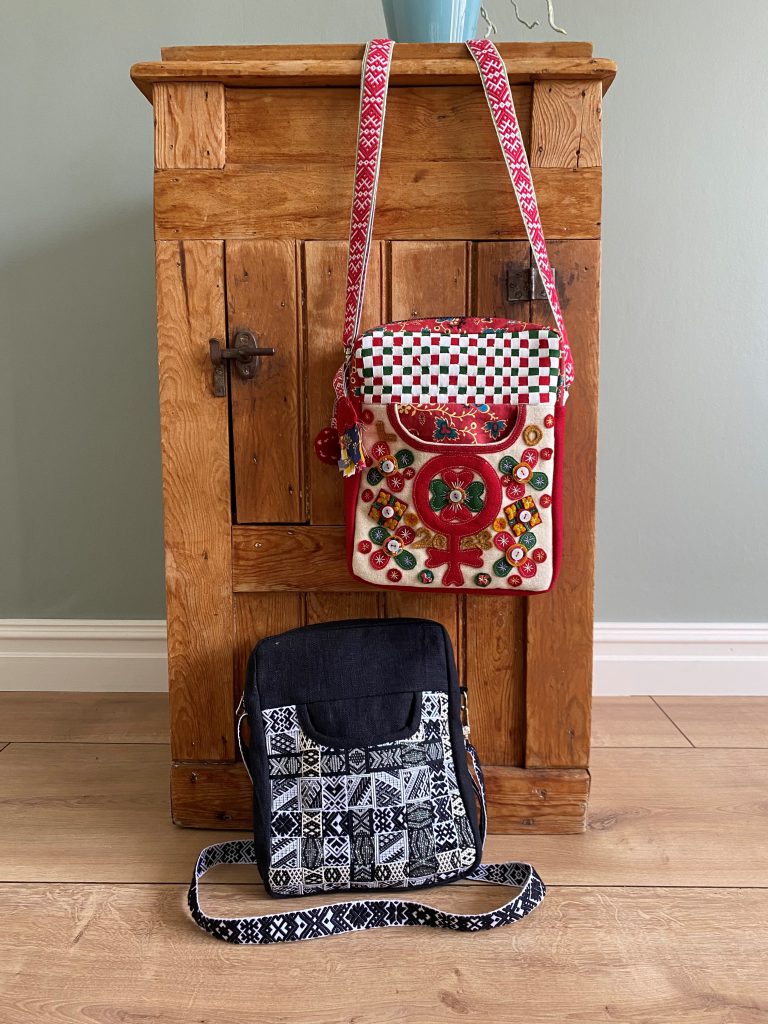
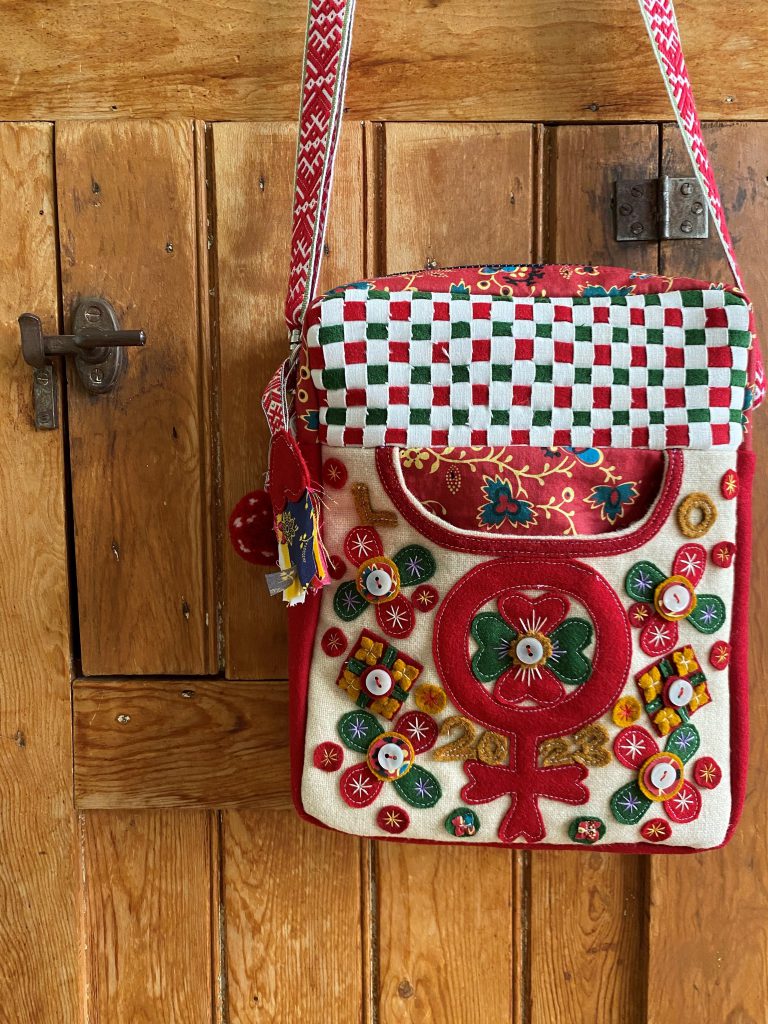
Arkitekturkollo för Borlängeungdomar med
Dalarnas museum och Borlänge kommun
På Gammelgården i Borlänge anordnas ett dagkollo i samarbete mellan Dalarnas museum, Borlänge kommun inom projektet Mitt slott, Ditt slott som finansieras av Allmänna arvsfonden. Kollot vänder sig till ungdomar mellan 13–18 år och äger rum den 12–14 juni.
På plats finns Pernilla Wåhlin Norén som är stadsarkitekt i Borlänge, samt Hedvig Mol byggnadsantikvarie och Anna-Lena Rågfälts museipedagog från Dalarnas museum. Tema för kollot är byggnadsvård och kulturmiljöer. Under kollot får ungdomarna möjlighet att undersöka arkitektur genom lokal historia varvat med teori och praktik. De kommer koka egen slamfärg tillsammans med Falu Rödfärg, prova på schablonmåleri och bygga fågelholkar med inspiration från byggnaderna på Gammelgården.
Kulturmiljöprogram och Mitt slott, ditt slott
Dalarnas museum arbetar just nu med att inventera bebyggelse och platser i
Borlänge kommun på uppdrag av kommunen som ska utmynna i ett kulturmiljöprogram.
– På kollot får vi möjlighet att föra en dialog med ungdomarna och höra deras berättelser om vilka platser som är av betydelse för dem, säger Hedvig Mol som är byggnadsantikvarie på Dalarnas museum.
– Syftet är att testa arkitekturkollo som form för att utveckla olika metoder för att inkludera unga i kulturmiljöfrågor samt öka deras kunskaper i kulturmiljöfrågor och byggnadsvård. Genom projektet Mitt slott, ditt slott får vi möjlighet att utforska metoder hur barn och ungas inflytande kan stärkas i det lokala och regionala kulturarvsarbetet och väcka deras intresse för kulturarvsfrågor, säger Anna-Lena Rågfälts som är museipedagog på Dalarnas museum.
Arrangörer: Den här aktiviteten är ett samarbete mellan Dalarnas museum, Borlänge kommun inom projektet Mitt slott, ditt slott som finansieras av Allmänna arvsfonden.
Pressen hälsas välkommen den 13 juni kl.13.30, på Gammelgården i Borlänge
Kontaktpersoner: Anna-Lena Rågfälts, anna-lena.ragfalts@dalarnasmuseum.se, tfn, 076-695 39 02
Hedvig Mol, Hedvig.mol@dalarnasmuseum.se, tfn, 070 – 291 12 91
Fakta om projektet Mitt slott, ditt slott
Mitt Slott, Ditt Slott är ett 3-årigt arvsfondsprojekt som drivs av Västmanlands läns museum, där Dalarnas museum kliver in i projektet år 2. I nära samverkan mellan länsmuseerna i Dalarna och Västmanland samt flera kommuner kommer ungdomar i åldern 13 till 18 år att involveras i det konkreta arbetet med t.ex utformning av kulturmiljöprogram. Projektet ska ta fram metoder, hitta former och skapa strukturer för hur ungas delaktighet och inflytande kan utvecklas och stärkas i det lokala och regionala kulturmiljöarbetet samt i samhällsbyggnadsprocessen. En digital verktygslåda med tips och råd till professionen tas fram under projekttiden. De båda museerna tillhandahåller och sprider efter projektet verktygslådan till kommuner, museer och andra som vill arbeta med att inkludera unga människor i kulturmiljöverksamheten

Nu visar Dalarnas museum ett urval av konst ur Region Dalarnas omfattande samling
– från äldre svartvita verk till färgstarka nutida.
Fotokonst, grafik, textil, måleri och skulptur av internationellt och nationellt erkända konstnärer.
Hela 157 verk, varav de flesta inköpta de senaste åren, visas för första gången samlade i en utställning
innan de placeras ut runt om i Dalarna.
Tillsammans äger dalfolket 21 383 konstverk som finns att uppleva från Idre i norr till Avesta i
söder. Totalt har regionen verksamhet på en yta som motsvarar drygt 65 fotbollsplaner. Konsten
finns att möta i livets alla skeden. Hos tandläkaren och folkhögskolan, på kontoret, vårdcentralen
och lasarettet. När du behöver pigga upp dig, tänka nytt eller få tröst.
Vid pressvisningen medverkar Helena von Bergen, verksamhetsutvecklare vid Bild och form, som
ansvarar för inköpen av konst till regionen:
Det är verkligen roligt att vi får möjlighet att visa en del av Region Dalarnas konstsamling i en tematiskt
utställning för första gången. Vanligtvis möts betraktaren av några konstverk i taget. I utställningen
önskar vi förmedla att konst behöver sin plats i tid och rum och allt passar inte överallt och till alla
tider.
Christer Björklund, museichef säger:
Bland allt som Dalarnas museum ställer ut har också samtidskonsten en självklar plats. Oftast när
det finns en koppling mellan konstnären och Dalarna eller mellan det konstnärliga temat och Dalarnas
kulturhistoria. I den här utställningen får vi chansen att visa konst från alla möjliga håll som Region
Dalarna har köpt in för att visa upp för dalfolket i sina lokaler i länets alla väderstreck – även det mitt
i prick för en utställning på länsmuseet.
Enprocentsregeln innebär att cirka en procent av budgeten vid ny-, om- och tillbyggnad
viks för konstnärlig gestaltning. Staten är föregångare sedan 1937 och 1969 beslöt Landstinget i
Dalarna att följa efter. Nu tillämpar 55 procent av Sveriges 21 regioner och 41 procent av landets
290 kommuner enprocentsregeln.
För mer information:
Helena von Bergen 072-245 93 50, Bild och form Region Dalarna,
Maria Perers, 070-235 36 15, antikvarie, Dalarnas museum.
Pressbilder:







Armlängds avstånd
Principen om politiken distans till även den offentligt finansierade kulturens innehåll
Få har kunnat undgå den senaste tidens diskussion om begreppet armlängds avstånd i kulturpolitiken. Dvs. principen som formulerades efter andra världskriget, som går ut på att politiken bör hålla sig på ett visst avstånd från innehållet i kulturen, trots att det är skattemedel som finansierar en hel del av den kultur och kulturverksamhet som produceras och upprätthålls. Eller man ska nog snarare säga: just på grund av att finansieringen sker med offentliga medel, eftersom tanken med armlängdsavståndet i grunden handlar om att kulturen – och den värderingspåverkan i samhället som kulturen är förmögen att ha – inte ska kunna användas i propagandistiska syften och tjäna en viss åsiktsbildning som den styrande makten råkar ha. Man hade de statliga propagandamaskinerierna i både Nazityskland och Sovjetunionen för ögonen och ville undvika sådant framöver.
Tanken bygger på att konsten, kulturutövarna och kulturinstitutionerna ska vara så fria som möjligt, eftersom det främjar fri åsiktsbildning och därmed demokratin. Det blir då grundläggande att det offentliga måste försöka underlätta för medborgarna att ta del av kulturens olika yttringar. I sig förbättrar det nämligen jordmånen för öppna sinnen och medmänsklighet, vilket i sin tur motverkar destruktiva låsningar och fientlighet i samhället (för att fritt citera John Maynard Keynes i hans egenskap av högt uppsatt rådgivare till det brittiska offentliga finansväsendet, när han propagerade för det som sedermera också kom på plats i Storbritannien: nämligen en ”myndighet” för kulturfinansiering som inte styrdes av politiker).
Det är lätt att bli högtidlig, högtravande och idealiserande när man talar om värdet av fri konst, demokrati och det goda samhället. Lika lätt tycks det dock vara att bli nonchalant, simplistisk och ta saker för givna. Det är väl därför bäst att ha en ödmjuk inställning till att det är invecklat med frågeställningar som har många bottnar, men inte sky en seriös diskussion för det.
En del framhåller gärna att det där med gränsdragningar är mer komplicerat än vad det i förstone kan tyckas och att principen om armlängds avstånd i all sin enkelhet därför är alltför luddig för att kunna användas. När är det t ex legitimt och rent av en skyldighet att politiker går in och bestämmer över de gemensamma resurserna och när bör man snarare låta bli? Det går såklart att vara formalistiskt och överanalysera i stort sett varje princip och hitta motsättningar eller hål i den. Och då ifrågasätta eller hamna i limbo.
Men i grunden handlar principer just om det principiella; det allmängiltiga, det man eftersträvar, ett förhållningssätt till något, en norm eller grundregel som kan förklara och ge vägledning i den komplexa tillvaron.
Därför är principen om armlängds avstånd inte särskilt komplicerad, som riktlinje och förhållningssätt betraktad. Den är snarare rätt enkel. Om man tror att mångfalden gynnas av att man låter bli att försöka styra så ska man göra det. Om man tycker att fler röster och perspektiv är viktigare för demokratins livskraft än vad rätten för den demokratiskt valda majoriteten att fördela vissa skattemedel enligt vad den själv finner bäst, då ska majoriteten dra sig undan fördelningsspakarna på detaljnivå. I varje situation, även då detaljförhållandena skiljer sig åt och de konkreta lösningarna behöver vara situationsanpassade, går det att tillämpa principen. Bara man tänker till, vill och ställer in sig på det.
I Sverige har principen av armlängds avstånd länge varit grundmurad, även om övertramp också har skett, ibland mer eller mindre medvetna men oftast till synes mer aningslöst. Det har skett under såväl s.k. högerstyre som vänsterdito. Den rapport som kom förra året från Myndigheten för kulturanalys (Så fri är konsten) pekade på en rad gränsdragningsproblem och gråzoner, bl a i form av politiska krafter som välvilligt har velat uppmuntra kulturen att bidra till vissa hedervärda samhällssyften och värderingar, men som därigenom också klampar in på – eller i vart fall misstänks ha påverkat – kulturinnehållsområdet genom de explicita, ideologiska och värderingsgrundade krav som ställs för att få finansiering.
Myndigheten pekade också på den indirekta styrning av kulturinnehållet som riskerar att ske genom de olika styrdokument som stat, regioner och kommuner är flitiga med att utfärda (vare sig det är politiskt antagna eller utfärdade på tjänstemannanivå) och som ger sig in på en lite för petig nivå för att inte påverka kulturaktörer som är beroende av offentliga anslag eller projektmedel.
På senare tid har det som många menar är klara åsidosättanden av principen om armlängds avstånd ökat i omfång och styrka. Exemplen börjar bli rätt många: bibliotekschefen i Sölvesborg som tvingades sluta, enskilda konstverk som motarbetats från folkvalda företrädare (också här i Dalarna), politiskt önskade förbud mot vissa sagostunder för barn, politiskt stoppat luciatåg i Bollnäs, politiskt ifrågasatt utställning i Norrköping, politiskt försök till att ställa in ett författarsamtal i Täby, för att nämna några uppseendeväckande fall. Ibland hörs politiska uttalanden (också i Dalarna) om vad som utgör ett kulturarv, helt skilt från vad professionen inom kulturarvsförvaltning och kulturmiljövård menar är rimligt. Ett annat färskt exempel kommer också från vårt område – museiverksamheten – i det nationellt famösa fallet med en nytillträdd ordförande för länsmuseet i Gävleborg som ville sätta gränser bl a för vad för slags konst som museet skulle hänga på väggarna.
Varför ägnar jag så mycket utrymme i museets kommunikationskanal med publiken till denna fråga? Det finns flera orsaker.
För det första anser jag personligen att frågan om fri konst, fri åsiktsbildning, demokrati och det offentligas ofrånkomliga roll att på många olika sätt främja allt detta hänger ihop och dessutom är centrala värden för en sund samhällsutveckling. Därmed är det något som alla i kultursektorn borde ta på största allvar och diskutera ännu mer än vad vi redan gör. Även om det ibland kan tyckas vara krångligt att realisera dessa värden. Särskilt när ängsliga och lättsårade själar runt om i samhället reagerar starkt och att det vore lättare för oss som enskilda inom kultursektorn att sticka huvudet i sanden och låtsas som om kulturen redan ekar av den mångfald av åsikter, synsätt och tolkningar som bevisligen finns i samhället.
Jag menar vidare att det vore rysligt motsägelsefullt att inte värna den offentligt stödda kulturens oberoende från den politiska scenen, samtidigt som vi är så många som deltar med stolthet och iver i firandet av den offentligt stödda fria demokratins 100-årsjubileum. Enligt min mening går det inte att nonchalera det ena om man på allvar upptas av det andra. De hör ihop och ska så behandlas.
Ibland hörs det sägas att det är den vanliga demokratiska ordningen att folkvalda ska kunna bestämma hur skattepengarna ska användas, även inom kulturen. Därmed, hävdas det, är det naturligt att ha åsikter från politiskt håll kring vad som ska visas, sjungas och berättas om när det behövs offentliga medel för att göra det. Det hänvisas till demokratins fundament: att det är den folkvalda majoriteten som bestämmer över det gemensamma.
Med den logiken är det lätt att inse, allteftersom det är majoritetens röster som hörs alltmer genom kulturen, att detta med tiden blir en självförstärkande kraft som riskerar att sudda bort bilder, sånger och berättelser som majoriteten inte gillar. Eller som representerar andra tolkningar av tillvaron än vad riksdagsmajoriteten eller majoriteten i region- eller kommunfullmäktige gör. En trend från kulturell mångfald till kulturell enfald, från fri åsiktsbildning till försvårad åsiktsbildning.
Vilka spänningar och underliggande konflikter skulle inte en sådan händelseutveckling skapa? Svårt att säga förstås. Men faktum är att människors behov av individualitet och variation är rätt stark och att det finns en hel del historiska exempel på hur en pådyvlad homogenitet leder till starka friktioner.
I mer radikala kretsar betonas också att kulturen ligger uppströms politikens genomförbarhet genom den kraft som kulturen har att påverka panoramat av värderingar i samhället. Därför bör man som resultatorienterad politiker, menas det, rikta in sig på att påverka kulturen. Insikten är klockren, men slutsatsen att man som politiker ska försöka påverka kulturens inriktning, snarare än att som folkvald försöka bidra till mångfalden av fria åsikter, tolkningar och yttringar, bär tydliga drag av egennytta och ett uppfostrande och auktoritärt förhållningssätt till omvärlden, snarare än att det värnar demokratin och pluralism.
Att vidhålla att det är majoritetens legitima och demokratiska rätt att dominera den offentligt finansierade kulturens uttryck ter sig vara precis tvärt emot insikten efter andra världskriget av vad ett sunt samhälle behöver – och behöver få hjälp med – nämligen en offentligt stödd kultur till vilken de styrande politikerna ska hålla ett armlängds avstånd.
Demokratins grundinstinkt borde ju vara att underlätta inte försvåra fri åsiktsbildning, även om det kan vara frestande (kortsiktigt?) för majoriteten att önska och verka för att alla tycker och tolkar världen på samma sätt.
Grundinstinkten borde då vara att uppmuntra en mångfald av bilder, sånger och berättelser, dvs. främja – inte tämja – mångfalden och på så sätt bidra till ett öppnare sinnelag, mindre fientlighet och en demokrati som utgår från allas rätt att utrycka och få del av olika åsikter och perspektiv.
För det andra anser jag att det är det angeläget för mig som företrädare för en profession som sysslar med de långa tidsperspektiven, att lyfta fram att vår historia är en sammansatt historia, kantad av en myriad av fenomen, åsikter och strömningar, en mosaik av både stora och mindre skeendeskärvor av olika form och färg. Det gör det lika omöjligt att förklara det förflutna med en enkel berättelse som det vore orimligt att försöka trycka in samtidskulturen i en viss förenklad mall genom att tygla den med dagsaktuella politiska tolkningar och förtecken, oavsett om de kommer från höger eller vänster.
För oss som arbetar på eller för ett kulturhistoriskt museum vore det både närsynt, oärligt och oansvarigt att inte väga in dessa belagda fakta – historiens och samtidens komplexitet och behovet av att kontinuerligt få den belyst och berättad på många olika sätt för att ge en någorlunda rättvisande bild av varifrån vi kommer och vad som nu sker – i diskussionen om hur det offentliga ska se på och stödja den fria konsten.
För det tredje är frågan om armlängds avstånd särskilt angelägen för oss som museum, eftersom vår sektors oberoende från politisk klåfingrighet är speciellt utpekad i landets lagbok. I Museilagen (2017:563) står det i 5§ att ”Museihuvudmännen ska säkerställa att ett museum har ett bestämmande inflytande över verksamhetens innehåll”. Med andra ord: professionen och inte politiken ska bestämma vad som sker, görs och uttrycks på museet.
Lagen är långt ifrån perfekt och rymmer en del otydligheter eller öppna formuleringar. Men just på den här punkten är den klar. Orsaken är den insikt som delvis refererades till inledningsvis i denna text, nämligen vikten av att kulturen – i detta fall vår gemensamma berättelse och kulturarv – inte ska förvanskas eller kidnappas av tillfälliga politiska agendor eller i propagandistiska syften för att styra samhället i en viss riktning baserat på en skev historieskrivning.
När man inom kulturpolitiken och kulturdebatten talar om vikten av armlängds avstånd anser jag därför att vi som företrädare och delansvariga för en museiverksamhet hela tiden behöver tänka på att armen ska vara särskilt lång inom vårt område, eftersom lagstiftaren har velat slå fast oberoendet även juridiskt.
För att avrunda: Museilagen finns. Principen om armlängds avstånd i kulturpolitiken mer generellt både hyllas och utmanas eller omtolkas allt oftare. Samtidigt är det ett faktum att principen varken är lagstadgad eller finns konkretiserad i något regelverk någonstans, vilket gör den vad många menar luddig till sin natur.
Är principen därmed lätt eller svår att följa? Saken är rätt enkel, tycker jag, om man betraktar den som ett förhållningssätt för värna och säkra kulturens mångfald som näringsgivare till en sund demokratisk samhällsutveckling, snarare än instrumentellt och som en detaljkarta för hur man som politiker ska agera och utöva sin demokratiskt förankrade makt.
Det kan dock helt klar finnas behov, inte minst för museer med styrelser eller med huvudmän som är knutna till politiken, att diskutera hur principen – förhållningssättet – ska tillämpas i den egna organisationen. För att det inte ska bli för abstrakt och för att det ska synas i hur kulturen uppmuntras och stöds offentligt. Det kan t ex handla om var gränserna går mellan ansvaret för och styrningen av verksamhetens allmänna ramar och innehållet innanför dem, vilka de olika rollerna är inom en styrelse och hur gränssnittet för styrning ska se ut gentemot professionen vad gäller verksamhetens inriktning och innehåll, hur man som museiföreträdare bör agera i sin roll i museisystemet och gentemot omvärlden och hur gränssnitten ser ut mellan rollerna. För att nämna några frågeställningar som en sådan diskussion skulle kunna innehålla.
Christer Björklund
Länsmuseichef
Dalarnas museum
2023-03-23
Under vårterminen erbjuds ett gediget programutbud på Dalarnas museum. Publiken kan förkovra sig i ämnen som t.ex. samiskt, coola kullor, dalmålare och arkeologi i världsarvet.
En nyhet bland vårens koncept är programmet ”Ting som talar”. Där bjuds publiken till hörsalen i den nya magasinsbyggnaden på Tallenområdet för en fördjupande föreläsning och titt på några föremål som annars inte visas upp i utställningarna i museibyggnaden.
”Vi hoppas att vår publik, både de som känner oss sen tidigare men också många nya, ska hitta program de tycker om i den numera rätt varierande buketten av inslag på museet”, säger
Christer Björklund, länsmuseichef, Dalarnas museum. Här finns något för både ung och gammal, för hela familjen, för den som är intresserad av historia, konst, samisk kultur och mycket, mycket annat.
”Vårt mål är att erbjudande en programverksamhet som både går på bredden och på djupet”, säger Anna Lögdqvist, VO-chef Publika, Dalarnas museum. ”Under våra temadagar får publiken riktigt frossa i ett ämne genom att flera programpunkter på samma tema erbjuds under en dag. Vi försöker även med mer riktade program nå fler målgrupper”, fortsätter Anna.
För barnfamiljen finns konceptet ”Familjesöndag”, med visning och skapande verkstad, återkommande en gång i månaden, medan fredagsmatinéerna där vi visar filmer ur vårt filmarkiv har blivit ett populärt inslag hos de lite äldre. För de som inte kan ta sig till museibyggnaden i Falun erbjuds ett antal hybrida program, d.v.s. där föreläsningarna även streamas till en digital publik.
Det fullständiga programmet går att läsa på Dalarnas museums hemsida. Önskas en fysisk folder går detta bra att hämta i receptionen på Dalarnas museum.
Kontakt:
Anna Lögdqvist, verksamhetsområdeschef publika, Dalarnas museum
anna.logdqvist@dalarnasmuseum.se, 023-666 55 26




